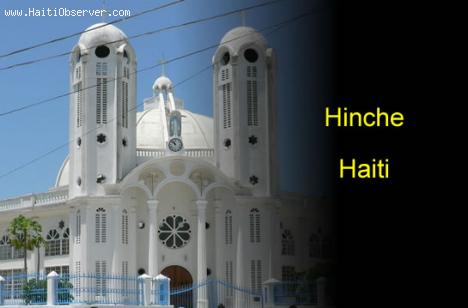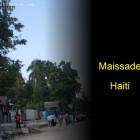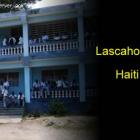ADVERTISEMENT
Central Plateau - Haiti Observer Blog
Central Plateau, Haiti Observer Blog. Read the following articles about Central Plateau
The Beautiful town of Boucan-Carre in Centre Department
Boucan-Carré, a district part of the Mirebalais Arrondissement, situates itself within the Centre Department of Haiti. Duffailly, Petite Montagne, and Les Bayes comprise the communes of Boucan-Carré.
Boucan-Carré's terrain is a combination of high mountain peaks and steep hollows. The Boucan-Carré River streams through the center of Chambeau, a small town. Agricultural farmlands dot the area and the charcoal industry is a chief means of employment for many residents.
More beautiful pictures about Boucan Carre in Haiti
Many non-government organizations have come forward to help strengthen Boucan-Carré's infrastructure. Since the early 2000's, U.S.-based NGOs, Haiti Outreach Program, Give Haiti Hope, and Partners in Health, have supported infrastructure development and maintenance. One of its projects, a full-service medical facility, has evolved from a local community clinic.
As source Kaara decreases, Saut d'Eau may no longer exist
Saut-d'Eau falls in the Central Plateau of Haiti is at peril of running dry. Its mouth, Kaara, is not producing enough water to keep the waterfall of Saut-d'Eau at full volume, having declined in its output over the last six months.
Simon Desras, President of the Senate, worries if the falls should stop flowing, the economy of the Central Plateau will suffer. The stoppage would damage, not only the economy of the region, but affect a tradition that has taken place at the falls since 1847. In that year, an apparition of the Virgin Mary manifested at the twin falls, beginning an annual pilgrimage to Saut-d'Eau, to bathe beneath the onrushing streams that plunge down the gorge. Upwards of 20,000 bathers visit each year for this sacred rite.
Mirebalais, Haiti's Ultimate City, Example of Country's Potential
Mirebalais, capital city of Mirebalais Arrondissement, is part of the Central Plateau on the island of Haiti. Saut d'Eau, Boucan-Carrè, and Mirebalais comprise the Arrondisement. Mirebalais is easily accessible by recently-constructed National Highway 3, only 25 miles and less than an hour's drive from Haiti's capital, Port-au-Prince.
Mirebalais is a model city, an example of what can be achieved elsewhere in struggling Haiti. It is an environment of uninterrupted streams of projects that has made possible more potential jobs available than ever before. In a deviation from many of Haiti's cities, it is on the power grid 24-hours a day, by its favorable location to it.
Lascahobas Economy
Lascahobas sits amid the Central Plateau of the island of Haiti. It is a second-level administrative division and the capital of Lascahobas Arrondissement. With a population numbering 41,716 residents, it is a one-hour drive from the Haiti-Dominican republic border. Three sub-divisions comprise Lascahobas, Little Background, Hoye, and Juampus.
In Lascahobas, agriculture drives the economy. Local farmland produces coffee, sisal, tobacco, and sugar crops. Sold at the always-crowded town market, the sale of these products supports commerce as a vital component of the community. A principle reason agrarian activity flourishes in Lascahobas is the well-irrigated farmland that draws water from the Lascahobas River.
The Town of Belladere in Centre Department
Belladère, part of Lascahobas Arrondissement, is a cityship located within Centre Department on the island of Haiti. A population of 78,770 residents, comprised mainly of young boys, form the largest segment of the population. The town contains three sub-divisions, Mathe-Renthe, Riaribes, and Roy-Sec.
Former Haiti President Dumarsais Estime established Belladère in 1948, its name meaning to guard. Considered the crème de la crème of the Central Plateau, its bewitching beauty and proximity to the Dominican-Republic make it an advantageous place for its export market. Elias Piñas, also known as Comendador, is the border-crossing city of the Dominican-Republic, over which Haitian day-laborers travel to seek jobs. Transportation means used to cross over include jitney buses, donkey trains, and agriculture export trucks.
The City of Hinche in Haiti
Hinche, capital city of Centre division, has 50,000 residents, most of whom are African from the Republic of Congo. Hinche has established Catholicism as its designated religion, but people are free to worship as they choose. As elsewhere in Haiti, a small segment of the population are Voodoo believers.
Hinche residents enjoy French-Creole food, standard items like jerked beef and lobster, fare that is on Caribbean plates everywhere. Hinche's variable climates yield a bounty of tropical fruits and vegetables. A full-flavored and sweet coffee indigenous to Hinche is paired with the region's Barbancourt rum.
Haiti Creates its First Eco-Village by Chavannes Jean-Baptiste
We all know the well-worn adage, necessity is the mother of invention. And this truism certainly applies to the tens of thousands of survivors from Haiti's catastrophic 2010 earthquake. Hundreds left Port-au-Prince, the hardest-hit area in Haiti, and sought shelter, food, and water, in places like the rural village of Hinche, located in the Central Plateau.
Manuel Laurol is just such a survivor. He and his family arrived in Hinche and found a tent city run by Mouvman Peyizan Papay (MPP), who supplied their basic needs for several months. On returning to Port-au-Prince, Manuel encountered "people living in misery", himself remaining unemployed for several months. Eventually, he and his family returned to MMP. Chavannes Jean-Baptiste, MPP's president, and his staff decided to apply sustainable farming practices and green technology to a pilot program for a housing project, Eco-Village.
Micro-Lending Program a First for Businesswomen in Haiti
In the Central Plateau town of Hinche, Prime Minister (PM) Laurent Lamothe and Minister Yanick Mézile of Women's Affairs and Rights (WAR) implemented the micro-lending program, Pink Credit for Local Women (PCLW), which will disburse modest loans to small businesswomen in rural regions of Haiti.
Prime Minister Laurent Lamothe listed the objectives of the micro-lending program: empower women economically, erase the stigma of poverty assigned them, and offer encouragement their lives can be improved.
Government of Haiti (GOH) President Martelly, an advocate of small businesswomen, has spoken out about the effects of micro-lending on struggling, rural female-owned businesses. He emphasizes the financial support given by the micro-lending program will allay many fears women experience in providing for themselves and their families.
Our objective is to share with you news and information about Haiti and the people of Haiti. Traditions, habits and the way we were or grew are alive in this site. We highly recommend that you Subscribe to our Newsletter and also share with us some of the things that are memorable and made us unique people.


 Haiti tech Summit
Haiti tech Summit  Something to think about
Something to think about  Battle of Vertieres
Battle of Vertieres  Maissade, Haiti
Maissade, Haiti  Lascahobas, Haiti
Lascahobas, Haiti